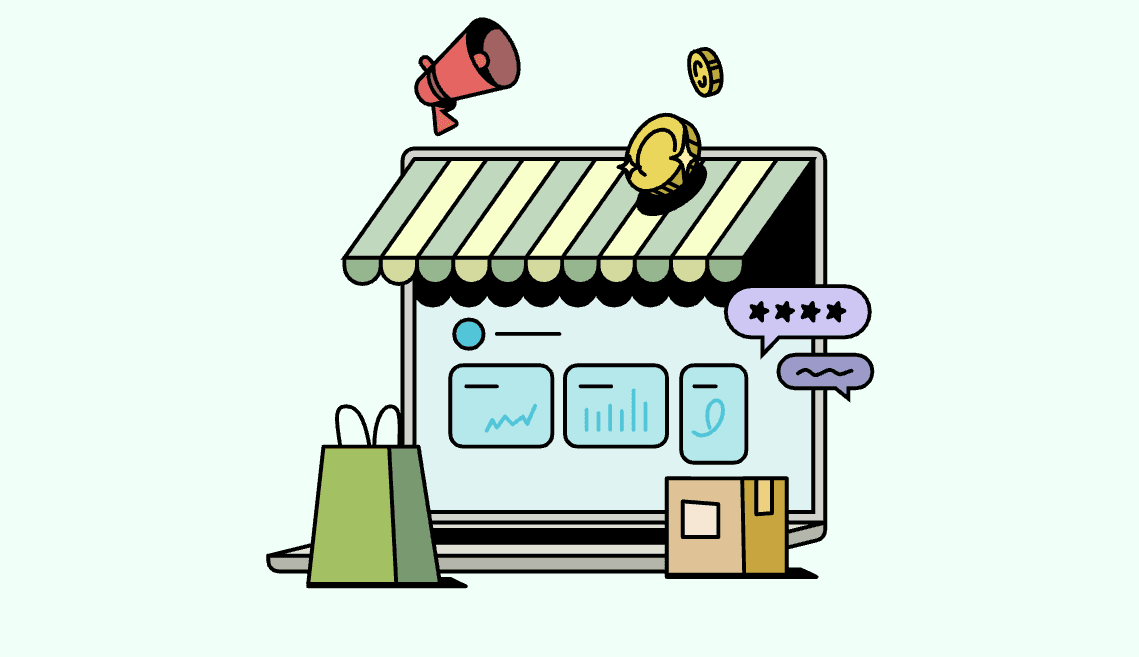Scaling an online business in 2025 is not just about attracting visitors; it’s about creating a system that can grow without breaking. From handling high traffic to delivering seamless customer experiences, every part of your e-commerce operation needs to be ready for the next step.
That’s where Shopify web development comes in. It’s more than just putting products online; it’s about building a reliable, flexible, and future-ready platform. In this guide, we’ll explore exactly how Shopify can help you create a scalable online business that thrives today and tomorrow.
1. Why Scalability Is the Heart of Modern E-Commerce
Every growing business eventually faces the same challenge: what worked for 100 customers won’t work for 10,000. Without a scalable setup, you’ll run into:
- Slow website load times during peak seasons.
- Inventory mismatches and fulfillment delays.
- Customer service bottlenecks.
- Higher operating costs without higher profit.
Shopify is built to solve these challenges before they start. Whether you’re a small business preparing for growth or an established brand aiming for global markets, Shopify’s infrastructure and ecosystem make scaling smoother.
2. A Solid Foundation: Shopify’s Technical Infrastructure
The best scaling strategy starts with stability. Shopify is a cloud-based, fully hosted platform. This means:
- No server maintenance → Shopify handles all hosting, updates, and security patches.
- High traffic tolerance → Auto-scaling servers keep your store fast even during sales surges.
- Built-in security → SSL certificates and PCI compliance protect customer data.
For example, during big sales events like Black Friday, Shopify web development stores don’t need last-minute server upgrades. The platform adjusts automatically, so you can focus on selling, not troubleshooting.
3. Designing for Growth: Custom Themes & UX
A scalable store isn’t just functional, it’s enjoyable to shop on. Shopify offers hundreds of themes, but custom development lets you:
- Match your exact brand identity with unique designs.
- Optimize for conversions by placing calls-to-action in the right spots.
- Improve load speed by trimming unused code and optimizing images.
User experience (UX) plays a huge role in scalability. A store that’s easy to navigate can handle more products, more customers, and more transactions without confusing visitors.
4. Mobile-First Design for 2025 Shoppers
Over 70% of e-commerce traffic now comes from mobile devices. If your store isn’t designed for small screens, you’re losing sales. Shopify developers can:
- Build responsive layouts that adapt to all devices.
- Use mobile-friendly menus and checkout flows.
- Ensure fast load times even on slower connections.
A mobile-optimized store not only converts better, it also performs better in Google rankings, which directly impacts Discover visibility.
5. Extending Store Functionality with Apps & Integrations
Scaling means adding capabilities without slowing down your workflow. Shopify’s app ecosystem includes:
- Marketing automation → email campaigns, abandoned cart recovery.
- Inventory management → real-time stock syncing across channels.
- Customer support → chatbots, ticketing systems, and helpdesks.
- Analytics tools → to monitor trends and optimize decisions.
For niche needs, custom app development ensures your store has exactly the features it needs, nothing more, nothing less.
6. SEO Optimization for Long-Term Traffic
A scalable business doesn’t rely only on ads; it builds sustainable, organic traffic. Shopify gives you control over:
- Meta titles and descriptions.
- SEO-friendly URLs.
- Alt text for images.
- Blog content integration.
Blogging within Shopify lets you answer customer questions, share industry trends, and boost keyword rankings, all while keeping visitors within your store ecosystem.
7. Global Expansion: Selling Beyond Borders
If growth is your goal, global markets are your opportunity. Shopify makes international selling straightforward:
- Multi-currency support with automatic conversion.
- Multi-language options for localized shopping experiences.
- Localized payment gateways for each market.
With the right development strategy, you can run one central store that adapts to different regions, reducing operational complexity.
8. Shopify Plus: When It’s Time for Enterprise Scaling
When your sales volume, product range, or market reach grows beyond standard Shopify capabilities, Shopify Plus offers advanced features:
- Custom checkout for higher conversion rates.
- Shopify Flow automation to manage repetitive tasks.
- Dedicated account management for strategic guidance.
- Headless commerce options for fully custom front-end design.
Shopify Plus is built for high-growth businesses that want to scale without compromising performance or customer experience.
9. Automation & AI for Efficiency
Scaling isn’t about working harder; it’s about working smarter. Shopify now integrates AI-driven tools for:
- Generating product descriptions.
- Creating discount campaigns.
- Organizing collections.
- Assisting with code customizations.
Automation reduces human error, speeds up processes, and lets you focus on strategy instead of repetitive tasks.
10. Keeping User Experience Front and Center
No matter how big your store gets, customer experience determines whether people come back. Scalable Shopify stores keep:
- Fast page loads for every device.
- Clear navigation even with large product catalogs.
- Simple checkout processes to reduce cart abandonment.
As your business scales, UX improvements should scale with it, ensuring your growth doesn’t come at the cost of customer satisfaction.
11. Real-World Trends in 2025 That Affect Scaling
E-commerce in 2025 is shaped by several key shifts:
- Faster delivery expectations → Customers expect 1–2 day delivery, making fulfillment integrations crucial.
- Sustainability concerns → Shoppers value eco-friendly packaging and transparent sourcing.
- Social commerce growth → Integration with Instagram, TikTok, and YouTube drives direct sales.
- AI personalization → Product recommendations and content tailored to each user increase conversion rates.
A Shopify store built for scalability can adapt quickly to these trends.
12. Measuring and Adjusting for Sustainable Growth
Scaling isn’t a one-time project; it’s ongoing. Use Shopify’s analytics to track:
- Conversion rates.
- Customer lifetime value.
- Sales by product, channel, and location.
Regularly reviewing data ensures you make decisions that support growth without sacrificing quality or profitability.
Final Takeaway
Shopify web development isn’t just a way to get your business online; it’s the backbone of sustainable growth. With the right setup, you can:
- Handle higher traffic without crashes.
- Expand into new markets with ease.
- Automate processes to save time and reduce costs.
- Maintain a great customer experience no matter how big you get.



I believe this website holds some very good info for everyone. “It is easy enough to define what the Commonwealth is not. Indeed this is quite a popular pastime.” by Elizabeth II.